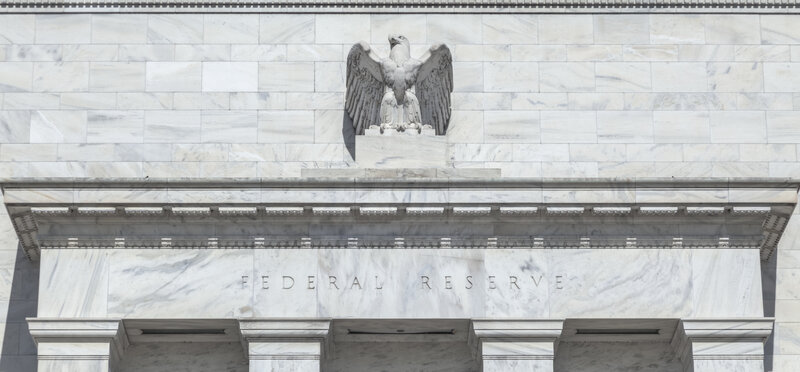Market Update
After three days of gains, the Nasdaq 100 index took a sharp turn lower on Thursday as focus returned to Fed tightening amid elevated inflationary pressures. There has been a steady stream of Fed member speaking throughout the week, with all so far on board with the message that amid unacceptably high inflation and a tight labour market, the Fed should quickly move in 2022 to remove monetary stimulus. Market commentators cited in particular remarks from Fed Vice Chair nominee Lael Brainard, who on Thursday gave testimony at a Senate hearing and signalled that interest rates in the US could rise as soon as March. Brainard has in the past been considered one of the Fed’s more dovish members. Meanwhile, senior Fed board of governors member Christopher Waller was out yesterday talking about the potential for as many as five rate hikes in 2022, if inflation doesn’t recede as expected.
As a result, the growth/big tech heavy Nasdaq 100 was the hardest hit of the major US equity indices, dropping more than 2.5% from earlier highs close to 16K to back under 15.5K. Remember that so-called growth stocks, which derive more of their present valuation from expectations for future earnings growth as opposed to present day earnings, are more sensitive to increases in interest rates, as that raises the opportunity cost of betting on future earnings versus earnings in the present. For that reason, the Dow, which is more heavily weighted towards industrial, financial, material etc. sectors where stock valuation has is based more upon current earnings levels, performed better, though still dipped about 0.5%. For now though, the index remains above the 36K level. The S&P 500, meanwhile, dropped 1.5% from earlier session highs in the 4730 area to closing levels around 4660.
Negative sentiment on Wall Street carried through to the Asia session and also seems to be weighing slightly on European equities this morning. For reference, the Stoxx 600 is currently lower on the day by about 0.6%. US equity index futures, meanwhile, are broadly flat versus yesterday’s closing levels. One of the key themes in US equities on Friday is big US bank earnings, which unofficially mark the beginning of the earnings season. So far, Wells Fargo and JP Morgan have both reported, with both beating analyst forecasts on top and bottom line, which might offer sentiment a boost as today’s session get going. The overarching fear of tighter Fed policy might make it difficult for equities to stage a more meaningful comeback to this week’s highs, however.
Looking at other asset classes, US and European bonds are subdued and continue to trade close to recent highs. The US 10-year, for example, is still in the 1.75% area where it has spent most of the week, while the German 10-year continues to consolidate a few bps below 0.0%. The most notable mover was Japanese bonds; the 10-year left above 0.15%, near its highest since February 2021, whilst the 5-year hit its highest going all the way back to 2016, when the BoJ first took rates negative. The upside in Japanese bond yields came following a Reuters report that said “BoJ policymakers are debating how soon they can start telegraphing an eventual interest rate hike, which could come even before inflation hits the bank’s 2% target”. The Reuters, report, which quoted “sources” at the BoJ, said policymakers there feel emboldened by broadening price rises and the more hawkish Federal Reserve.
BoJ rate hike chatter, even though the sources didn’t talk about anything happening on rates until 2023 at the earliest, came as a big surprise to the market and has helped underpin the yen, which is (by a slim margin) the top performing G10 currency on Friday. USD/JPY slipped back under the 114.00 level overnight and has been unable to rally back above it this morning. The pair has now dropped back over 2.0% since last week highs in the 116.30s, with most of that move having been driven by the broad USD weakness of the past few sessions. Speaking off, the DXY looks on course to post a fourth negative session in a row and is trading subdued in the 94.80 area. The dollar has been getting battered recently despite the aforementioned hawkish Fed developments and a lot of very hot US economic data (CPI, PPI this week following the jobs report last week). As Reuters puts it; “investors took the view that most of the recent hawkishness from the U.S. central bank has already been priced in… With hedge fund positioning holding close to the highest since early 2020 and terminal U.S. rate pricing signalling peak rates at below 2%, far below the highs of previous Federal Reserve rate cycles, investors took profits on long dollar bets.”
In terms of the rest of the G10 today; the Aussie is a laggard down 0.3% versus the buck despite solid Chinese trade data overnight, which saw the country’s trade surplus widen amid stronger than expected exports, which have been boosted since the start of the pandemic by strong global demand. Perhaps there are fears about the impact of the rapid spread of Omicron in Australia; Westpac on Friday noted that spending on its cards had fallen sharply in the first two weeks of this year, falling back from the record highs set in December. “The category detail shows a broad-based move, with a slightly bigger slowdown for discretionary categories, hospitality and ‘other durables’ in particular” said the bank. Elsewhere, the rest of the G10 currencies are broadly flat, with GBP having largely ignored this morning’s much stronger than expected UK GDP data for November. The economy grew 0.9% MoM, well above forecasts for 0.4% MoM growth and meant that the size of UK economy had recovered back to pre-pandemic levels. As long as the shrinkage in GDP isn’t more than 0.2% in December, UK GDP in 2021 would be above 2019 levels. But that is far from guaranteed amid the disruptive nature of the rapid spread of Omicron in the UK, both in December and now also in January. Expectations for a sharp slowdown in these months is probably why sterling didn’t benefit from the data. Not that the slowdown in the UK economy is ultimately expected to be short-lived, however, with Omicron infection rates already falling in the UK, meaning a good outlook for the latter half of Q1 2022.
Day Ahead
US December Retail Sales and Import/Export Price data at 1330GMT is the main release of note for the day. US December Industrial Production data at 1415GMT will also be worth watching, however, as will the release of the preliminary University of Michigan Consumer Sentiment survey at 1500GMT. There is than a speech from influential NY Fed President and FOMC member John Williams at 1600GMT.




